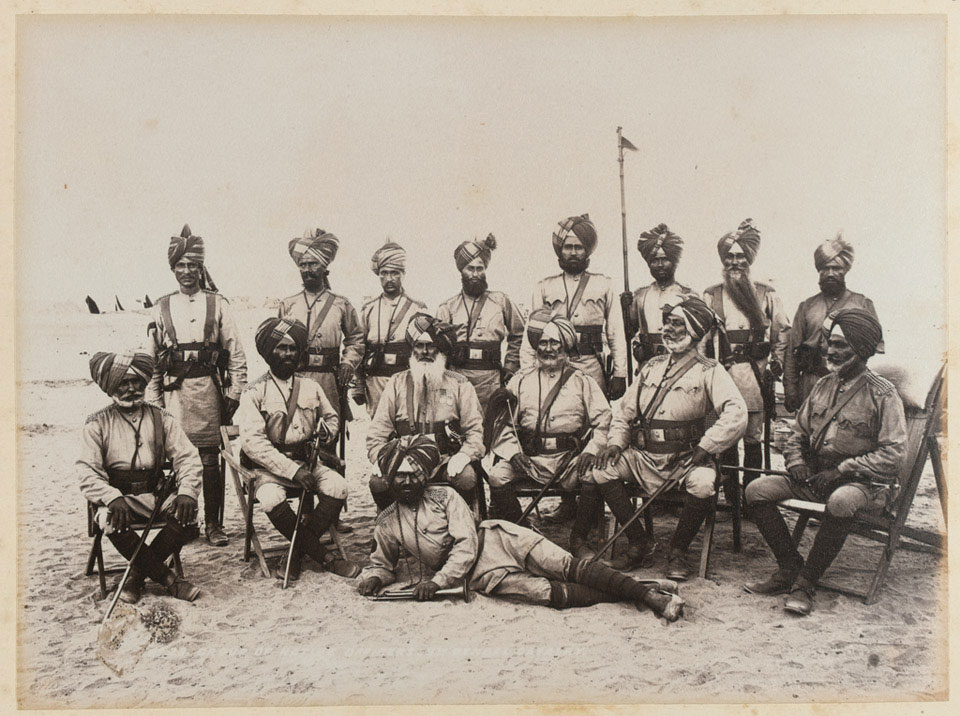
Online Collection
« Prev - 1 of 1 results - Next »
'No. 23. Native Officers, 9th Bengal Cavalry', Suakin, 1885
Photograph, Suakin, Sudan, 1885.
Group of Indian officers and men of the 9th Regiment of Bengal Cavalry. A bugler is lying in the front of the picture and several officers are seated on folding camp chairs.
The 9th Bengal Cavalry (also known as Hodson's Horse) were converted to lancers in 1885, the year in which they arrived at Suakin on the Red Sea coast of Sudan. Large numbers of Indian Army troops were shipped from India to Sudan to help defend the few remaining outposts left in Anglo-Egyptian hands after the fall of Khartoum, Kassala and Sennar to Mahdist forces in 1885.
Suakin is a port on the Red Sea in the north east of Sudan. It was used as a base by British forces operating against the Mahdist supporters of Osman Digna in 1884. Major General Sir Gerald Graham commanded a small Anglo-Indian force at Suakin. As the British attempted to evacuate the Sudan, a number of hard fought battles including El Teb and Tamai were fought by the Suakin Field Force. When a force was despatched from Egypt to relieve General Charles Gordon at Khartoum, Graham commanded a second expedition to Suakin. A railway was to be constructed from Suakin to Berber to connect the two forces. The Suakin expeditionary forces defeated the Mahdists at Hashin and Tofrek in March 1885 but the political situation resulted in a decision to end the campaign. The Suakin to Berber railway project was abandoned and the Suakin Field Force was evacuated in May 1885. Suakin's importance was eventually reduced permanently as Port Sudan was developed by the British following the defeat of Mahdist forces in the region.
From an album of 72 photograph taken by the Royal Engineers with the Suakin Field Force.
NAM Accession Number
NAM. 1972-11-91-23
Copyright/Ownership
National Army Museum, Out of Copyright
Location
National Army Museum, Study collection
Object URL
https://collection.nam.ac.uk/detail.php?acc=1972-11-91-23

